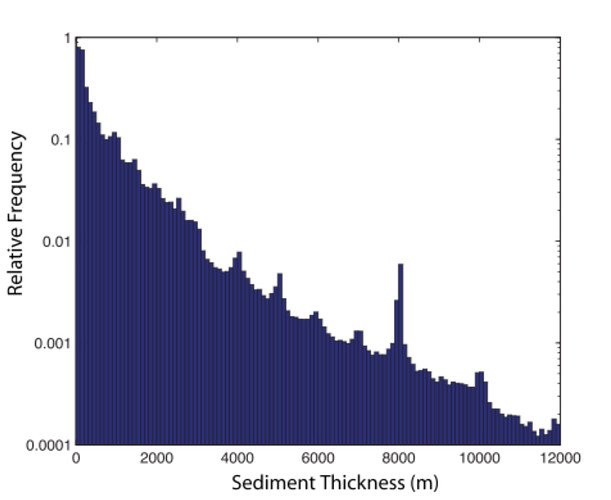Here is my wrapup for this thread. Although I have certainly been in the minority in my views on this, I want you all to know that I have appreciated your input and the links you have provided for further study.
The study of Sloss sequences (or “megasequences”), based upon actual geological data derived from borehole samples, leads us to recognize that at some time in our earth’s past, all continents were simultaneously subjected to increasing levels of ocean flooding. And after hitting the highest level, covering at least most of all continents, the sea levels (during the Tejas sequence) quickly fell as the flooding waters drained off the continents (producing, for example, “the Whopper Sands”—over 1,000 feet thick–of the Gulf of Mexico).
In the 1960’s Sloss, studying specifically the North American continent, pointed to six “discrete packages” of sedimentary rock layers—bounded below and above by “unconformities,” that is, layers of erosion (or, at least, non-deposition of sediment). From the bottom to the top, he called them the Sauk (corresponding to the Cambrian—middle Ordovician), the Tippecanoe (middle Ordovician—middle Devonian), the Kaskaskia (mid-Devonian—mid-Mississippian), the Absaroka (end of Mississippian—Permian) , the Zuni (Jurassic—Cretaceous), and the Tejas (Paleocene—Oligocene).
Each of these megasequences records a major “transgression”—or incursion of ocean waters over the craton (continent), followed by a major “regression,” when the ocean waters receded off the continent. The uniformitarian interpretation says that each transgression and regression of ocean water occurred over millions of years; that is, they envision a slowly, slowly rising sea level that spilled over onto the continents, then spread out, to increasing extents from Sauk to Tejas. Because they see each flooding period as occurring over millions of years, they interpret the slowly transgressing and regressing waters as “epeiric (that is, inland) seas”—“ancient seas that once covered our continents.” On the other hand, the catastrophic Flood interpretation sees these six transgressing/regressing cycles of flooding ocean waters as occurring with powerful hydraulics—possibly by mega-tsunamis set off by plate tectonics—powerful enough to drive 250-ton boulders (as found in the Sauk megasequence). Powerful enough for the Sauk transgressing waters to erode basement granite, leaving the “Great Unconformity.” Disarticulated and graded bone beds all over the world also testify to much greater hydraulics than proposed by uniformitarians.
Both the uniformitarian and global Flood views recognize the function of these flooding water sediments in producing fossils. However, the former believe fossils were formed when marine organisms simply died and sank down into their epeiric sea sediments; and terrestrial organisms were fossilized after dying (in most cases) a natural death, then falling into lake or river sediments. On the other hand, the latter believe the turbulent sediment flow itself killed most life forms—marine and terrestrial—quickly and completely burying them…thus accounting for, on one hand, many amazingly detailed fossils; but, on the other hand, jumbled-up bone beds.
While uniformitarians see the fossil record as a portrayal of a mostly normal life, much like today; Flood catastrophists see the fossil record as a portrayal of sudden and overwhelming death.
